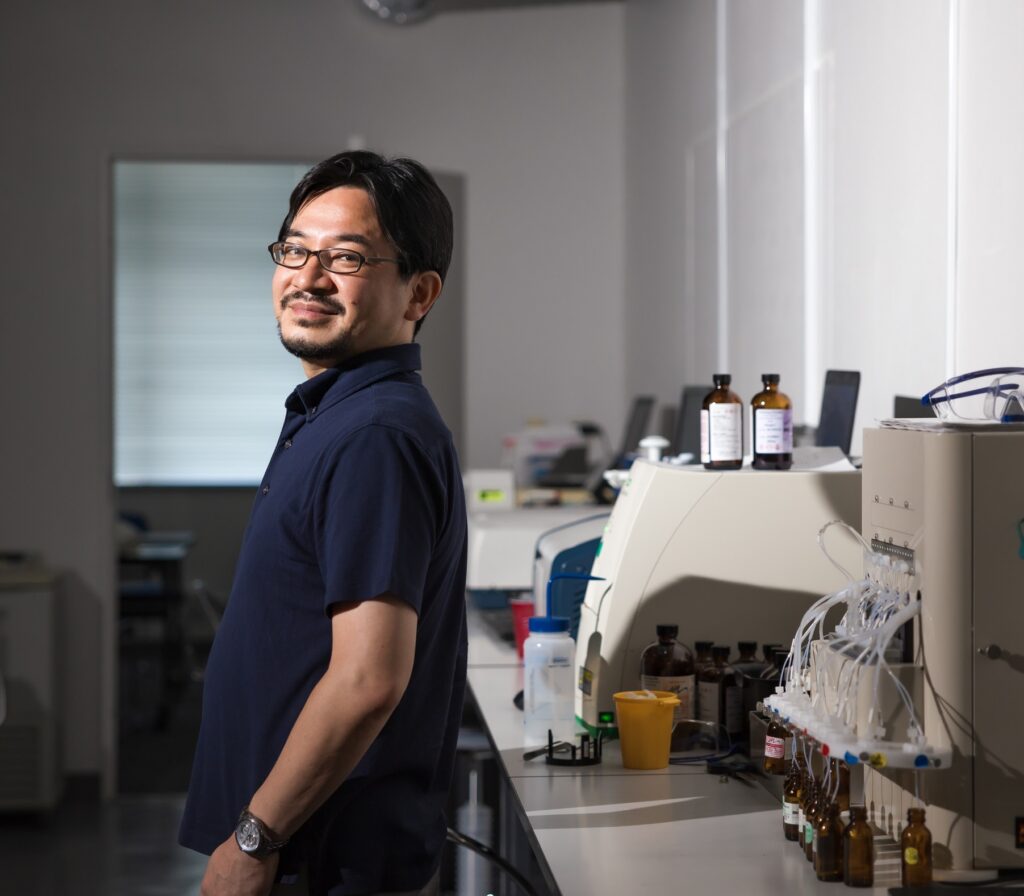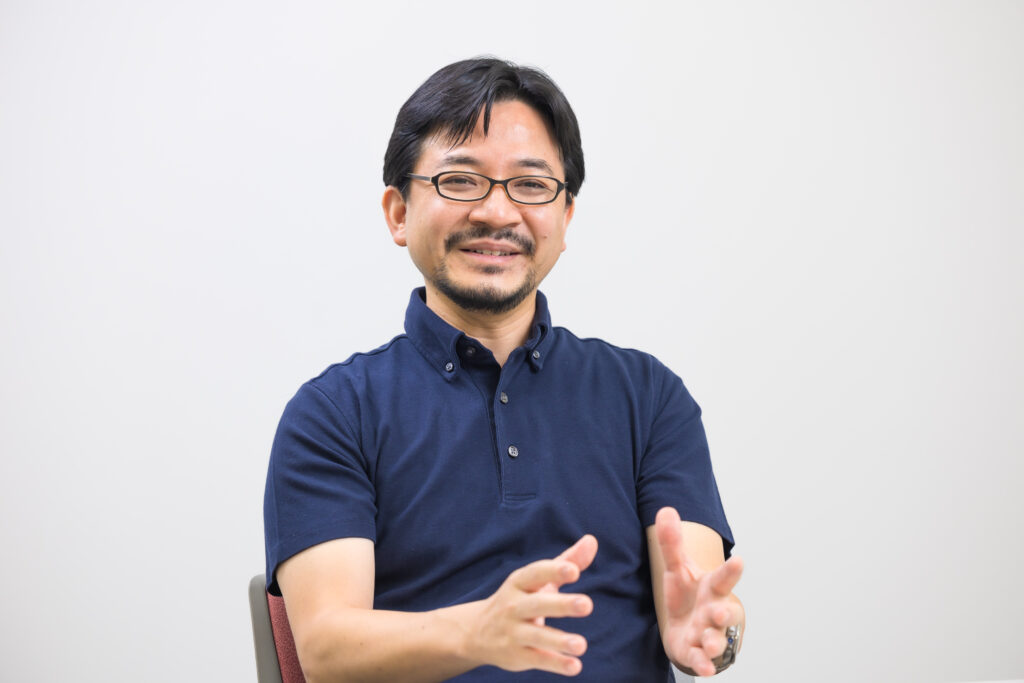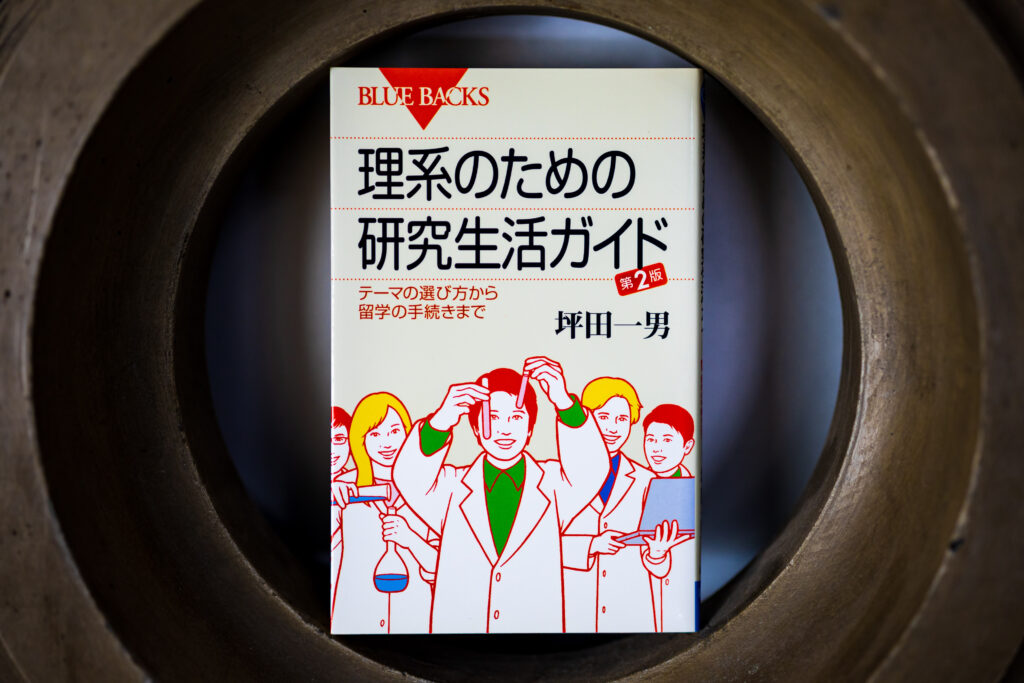
Professor Jiro Kondo of the Faculty of Science and Technology heads the only research lab in Japan to specialize in X-ray structural analysis of DNA and RNA. Here, he discusses the significance of manufacturing that utilizes the structures of these nucleic acids, including nanowires made with DNA and silver and pharmaceuticals that target RNA.
The majority of people understand that DNA is a substance that stores genetic information, and is found in the bodies of humans and other living organisms; but it is much more than this. “DNA” is an acronym for “deoxyribonucleic acid”; it is just a chemical substance that can be created in about an hour using fully automated DNA synthesizers—it does not have to be extracted from living tissue. In terms of its structure, Some DNA forms double-stranded (duplex), four-stranded (quadruplex), and eight-stranded (octuplex) helices, while some have kinks in the middle.
I research nucleic acids, and this entails observing, designing, and modeling DNA and RNA to create things that benefit society. In other words, I utilize DNA and RNA structures to manufacture things. I work in an academic field called structural biology, but most structural biology research focuses on proteins. In fact, my research lab is the only one in Japan that specializes in nucleic acids. And the reason I focus on nucleic acid structures is because there are some things that can only be done by actively utilizing the structures of DNA and RNA.
DNA can be used as an insulator—pass a wire through its center, and it becomes a cable

One of the objects I have manufactured is the world’s thinnest cable, which I made by passing a wire along the helical axis of the DNA duplex. DNA is a small molecule with a diameter of just two nanometers (two one-billionths of a meter). Using a method called X-ray crystallography, which involves directing a beam of X-rays at crystallized molecules, we can clearly observe the shape of DNA in detail using computers; this, in turn, allows us to perform extremely delicate DNA modeling.
DNA is not a good conductor of electricity, so by lining up individual atoms of silver or other metals along the helical axis of the DNA duplex, we can create a cable—and these cables have the potential to make possible the extreme miniaturization of IC chips and other storage media. Above all, however, the concept of passing a wire along the helical axis of the DNA duplex is quite novel, and, in fact, there is a side to manufacturing things with DNA that requires the proposition of new ideas and values.
In recent years, drug discovery has increasingly focused on RNA. Previously, pharmaceuticals tended to act on the proteins that caused illnesses, and development focused on modulating their functions; however, nucleic acid drugs—which are made from DNA and RNA—act directly on RNA and seek to control protein synthesis itself. Development is progressing rapidly, particularly in the field of therapeutic drugs for muscular dystrophy and other intractable diseases. In order to create drugs that act effectively on RNA, we must actually observe the shape of the RNA molecule in question, then design a drug that fits this shape perfectly. For this reason, the three-dimensional structure of RNA has at last come under the spotlight.
There are no walls in science: increasing possibilities through inter-disciplinary collaborations
My research centers on the chemical substances known as nucleic acids, which are a fairly familiar aspect of biology, and I use formulae to analyze and observe crystals; as such, it is deeply interlinked with biology, chemistry, and physics, and tends to have lots of points of contact with other academic disciplines. If we can draw on expertise in the fields of mechanical and electronic engineering, we should be able to find a greater number of effective uses for the world’s thinnest cable I discussed earlier. As such, for the time being, our goals must be to use various modes of communication to make our research known to as large an audience as possible, and to nurture researchers capable of actively collaborating with other fields. Before us stands a vast world of science—a world without walls delineating different subjects or academic disciplines.
The book I recommend
“Rikei no tame no kenkyu seikatsu guide”(A guide to the life of scientific research)
by Kazuo Tsubota, Kodansha

The author draws on his own experiences to explain how to decide on which topics to research, how to acquire funding, and how to behave when giving presentations. It is a book that upends the conventional notion of researchers as people who lock themselves away in their research labs.
-
Jiro Kondo
- Professor
Department of Materials and Life Sciences
Faculty of Science and Technology
- Professor
-
Professor Jiro Kondo received his Ph.D. in Science from the Graduate School of Bioscience and Biotechnology, Tokyo Institute of Technology. After working as a postdoctoral researcher at Université de Strasbourg, IBMC-CNRS, and associate professor at the Department of Materials and Life Sciences, Faculty of Science and Technology, Sophia University, he was appointed to his current position in 2023.
- Department of Materials and Life Sciences
Interviewed: June 2022